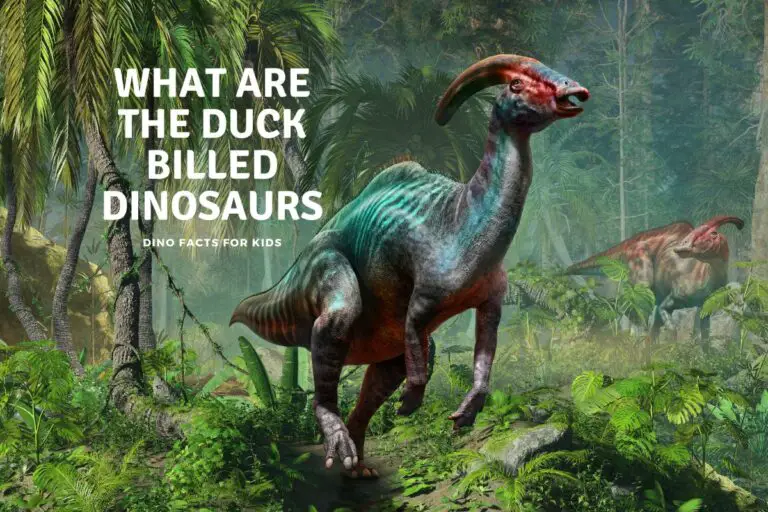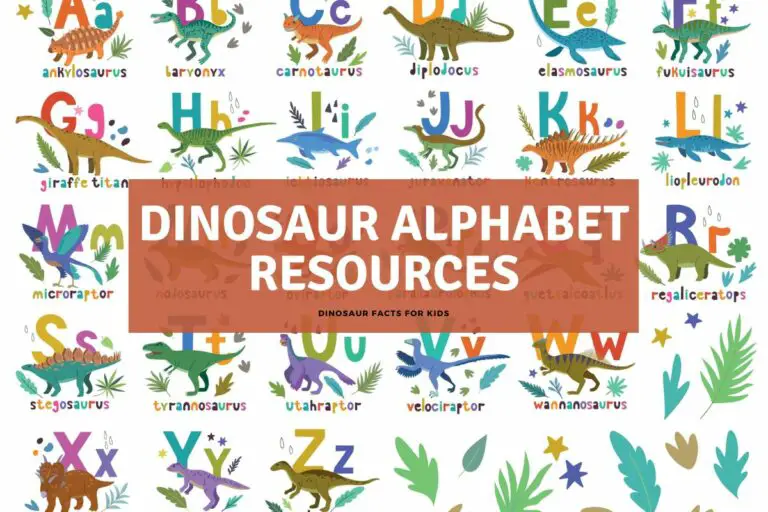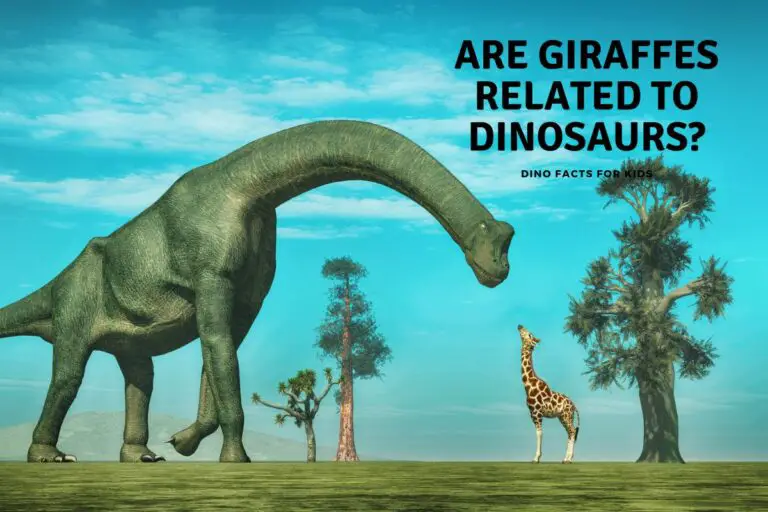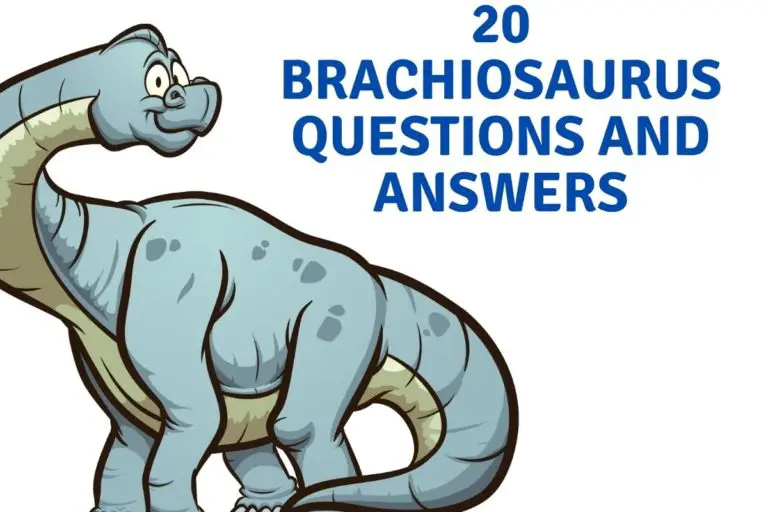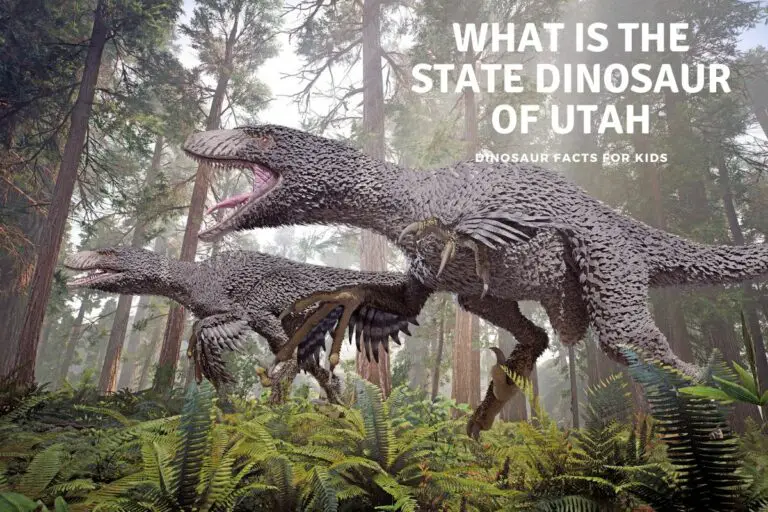Did Dinosaurs Sleep Standing Up?
Living as a dinosaur, or in fact even any wild animal today, can be a dangerous time. It was a eat or be eaten world, and closing your eyes for a few minutes rest or not could be the difference to being some things meal or being alive to carry on doing what dinosaurs do. Did dinosaurs need to be ready for quick getaways and did they sleep standing up?
Certain species of dinosaur may have slept standing up. Some modern animals like cows and horses can sleep standing up today. However, possibly large herbivores would sleep with their legs tucked under them. Biped dinosaurs like T-Rex and velociraptor could have also slept this way or curled up like birds to sleep.
So which dinosaurs may have slept standing up, did they need the 8 hours sleep we do, did dinosaurs sleep at night or did they sleep whenever it was safe to do so. We take a look below.
Although it is very difficult to tell from a fossil how a dinosaur slept we can take some leads from how similar animals sleep today. The general rule of thumb would be two legged dinosaurs would almost all sleep laying down to some degree however the rule for 4 legged dinosaurs is not as straightforward.

Which Dinosaurs May Sleep Standing up?
We can look at animals that live today like herd animals. Some sleep standing up and some laying down, or on with their legs folded up underneath them. Animals like cows, sheep, and horses are capable of sleeping standing up
It is possible, though not evidenced, that similar herbivores like the armoured dinosaurs like stegosaurus and ankylosaurus may have slept standing up, or with their legs folded underneath them. it should have been unlikely for them to be able to lay down and get up either easily and quickly.
Similar dinosaurs with spikes like kentrosaurus would have difficulty laying on their side, and would either have slept standing up or on their folded legs.
The Dinosaurs that possibly slept standing up or on their folded legs could be
- Kentrosaurus
- Ankylosaurus
- Cedarpelta
- Euoplocephalus
- Sauropelta
these are all heavily spiked or armored dinosaurs and so lay down on their side would have made getting up again incredibly difficult.

Which Dinosaurs May Lay Down to Sleep?
Other dinosaurs like the horned dinosaurs may have been able to physically lay down to sleep, if they were not to barrel chested ( or chubby) The key aspect of sleeping laying down is to be able to get back up. (we discuss how even pretty nimble dogs struggle with this sometimes)
- So triceratops, pentaceratops may have had the option to actually lay down for a good night’s sleep. However it does depend on how bulky they were. With those massive skulls it does make sense to rest that head down at least sometimes to give the neck muscles a break. If they could lay on their side depends on their actual width, but they should have been able to rest themselves on the folded legs at least.
- Also ornithosaurus an others being two legged would have curled up to sleep or slept with their legs underneath them, like they were keeping eggs warm. They were light enough to do this.
- Hadrosaurs would be able to lay down it is thought, many had well developed forelimbs that could be used to pull and push trees and vegetation and were large enough to push themselves back up to standing. in fact even T-Rex might have been able to do that!
- The Large Sauropods with the huge legs may have stood up to sleep, but those long necks would need a break so they may have also rested with their legs folded underneath them. it may have taken a while to stand up, but if they were so big as to be off the menu it shouldnt be a huge problem for them. They didn’t do much quickly! . it is very unlikely they were able to lay on their side to sleep with their massive bulk however.
- The oviraptorosaurs, like oviraptor have been found in sleeping positions more than other dinosaurs, however this could be down to environment as they were found in deserts where sand dunes could collapse on them quite quickly.
Sleeping on your side NOTE: If you see how a dog sleeps it is possible to sleep both on its side, laying down, and on its legs.
For deep sleep dogs will sleep on their sides, or even comically on their backs, but for naps they sleep with their legs under them. This is to enable them to stand up and move quickly, If you have a dog you will have seen how ungainly and amusing it is when they get up from their sides with their legs waving about all over the place. It may be more comfortable, but it’s definitely not suited for a quick getaway.
With so many dinosaurs being at the wrong end of a food chain, it may be they slept depending how secure they were at that time. Unless they were big enough or toothy enough it may be they had to choose between comfort and security when deciding whether to lay down, sleep standing up or in-between and on top of folded legs.
Theropods probably lay down to sleep.
As we mention below it is likely the two footed theropod dinosaurs were likely to sleep laying down, maybe even like modern birds. Fossils have been found of theropods curled up like birds ( though not very often) one is mei Long which we discuss below.
However sleeping on two legs, just like for you or me, is very difficult. So for smaller theropods, they could have curled up and roosted like birds, and for the larger dinosaurs, like T-Rex, Allosaurus, or Spinosaurus, if unable to curl up they maybe have slept on their hind legs like an ostrich.
Dinosaurs like T-Rex and other large theropods were bulky but strong, although more likely they would have been sleeping with legs flooded up, it is possible they could sleep on their sides, or with their legs to one side as well. A T-Rex arms may have been small but recent studies suggest those arms were really strong.
it would have been able to push its self upright to get to a standing position again, and as amusing a sight as it would be even from laying on its side it could swing its legs to put its legs under it again.
it may have taken a few try’s but not much was walking around that would make a T-Rex need to move in a hurry.
How do we know how a dinosaur slept?
We don’t really know how did dinosaurs sleep, we can only look at modern animal equivalents, the bones and structure of the dinosaur and work out what would be most comfortable, or which sleeping position was more likely.
However, rarely, very rarely, there are fossils of dinosaurs that died in their sleep and did not go through the rigor mortis after death (when their head stretches back). One of these was the Mei Long ( which also has one of the shortest names of all dinosaurs)
Its name actually means “sleeping dragon” in Chinese. its fossil was discovered in a sleeping position like a bird. This is very unusual and it is thought that this dinosaur was sleeping when it was instantly covered in volcanic ash. There are two specimens found like this. and shows that the troodons (that i the family Mei long belonged to) slept like modern birds.
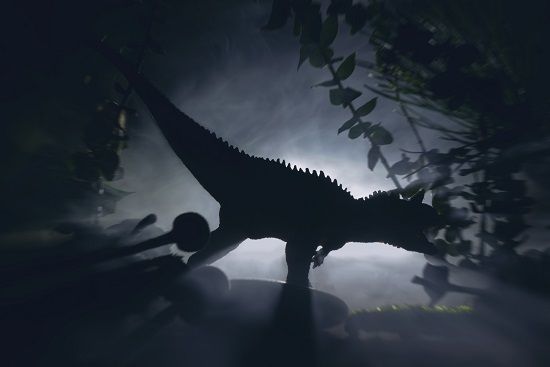
Who slept more carnivores or herbivore dinosaurs
While there is no real way of knowing this, we can look at modern animals to get some ideas to make an educated guess. Carnivores at the top of the food chain really dont have much to worry about and can spend their time lazing around providing they have an adequate food source.
Carnivore dinosaurs
For example Lions spend about 16 to 20 hours resting or sleeping, they have both the security of being the apex predator and the pride to protect them. Leopards who live mostly solitary lives sleep and rest for about 16 hours
If we translate this to the late cretaceous, and potentially if the food source was good large predators with no large threats ( mainly other T-Rex) could spend their time doing similar and resting and seeping for most of the day or night ( more on this later)
Herbivore Dinosaurs
For herbivore dinosaurs life was less relaxing however, depending how large or well armoured they were dinosaurs were at risk of being eaten. this would interrupt anyones sleep! Again if we compare to modern animals herbivores sleep less in todays world, and we can imagine that dinosaur herbivores slept less also .
For example, in this list of length of sleep of modern animals, the giraffe has the least sleep. ( we are not sure what exactly a giraffe has to worry about though) only sleep for about 2 hours a night. Goats for about 5 and cows and sheep for about 4.
The thought of a hungry predator definitely disturbs sleep it seems.
So Dinosaurs like dryosaurus, gallimimus, and other dinosaurs that relied on speed would likely sleep less and lighter. those with size, spikes or armour may have had the luxury of a few more hours sleep a night.
However smaller carnivores, like velociraptor, or carnivorous dinosaurs with more threats or competition may have had their sleep cut short as well. There was always something trying to eat you if you were smaller.
As we mentioned in our “Did dinosaurs sleep at night article” Carnivore Dinosaurs in studies have been shown to be much more evolved and adapted to be active in low light, nighttime conditions,
So it may be that the smaller raptors would have been awake when anything big enough to eat them was, and slept at the same time. it gave them a little more time to relax if your predator is catching some “zzz’s” at the same time as you.
All, well most, of this is estimation however, as the sleeping habits of dinosaurs are one thing that are not commonly fossilized and guess work, the very few fossils, and looking at modern day wild animals is the only way we can try to work out how dinosaurs slept.
How Many Hours Did Dinosaurs sleep For?
As we mentioned above, we are deep in the territory of estimation here. It really is not known how long dinosaurs would sleep for and as we mentioned above it is likely, but not known, that carnivore dinosaurs would sleep longer (and more soundly) than herbivore dinosaurs. Based on that estimation, if correct, then the following list may fit dinosaur sleeping patterns. However it is pretty much guesswork
Table 1: Possible sleep patterns of dinosaurs
| Length of SleepDinosaurReasoning3 Hours or UnderDryosaurus, Ouranosaurus, CamptosaurusFast moving biped lived with predators like Utahraptor and Allosaurus, possibly in packs or with other herbivores. | ||
| 6 hours or underStegosaurus, Ankylosaurus, other “spiked” or armored dinosaurs. | Had a little more protection due to their size, stegosaurus is suggested to live with iguanodon family dinosaurs like camptosaurus so possibly a little more “strength in numbers” protection9 hours or underSmaller carnivores, large sauropods (though if base on Giraffe this could be way off) Large Sauropods had little to fear from most predators when fully grown, giving mor etime to relax, also their diet requirements means a slow lifestyle. Smaller carnivores while safer may still have predators and if solitary may have had less sleep. | |
| 12 hours or more. | Large carnivores, possibly Sauropods | Most large carnivores have little in the way of threats and can sleep when and where they want. Threats most likely to come from their own species. Sauropods as mentioned either slept a lot to save energy, or slept little to keep feeding. We have to guess at this. |
Did Dinosaurs sleep in Caves?
As far back as Lystrosaurus there were animals thought be making and finding shelter to sleep and rest in. Lystrosaurus lived about 250 million years ago, before the dinosaurs evolved, and was a born survivor! ( you can read more about them in the link here and below)
So it is safe to assume that some dinosaurs would seek shelter in caves, both as protection from predators and the elements. In fact there is fossil evidence that dinosaurs did use caves for nesting, resting and sleeping. A dinosaur called Oryctodromeus made its own burrows, if they could make their own they would certainly use naturally made caves when the opportunity arose.
Conclusion
So while the sleeping habits of dinosaurs will always be up for interpretations and guesswork we can look at modern animal behavior, the fossils we have found of sleeping dinosaurs, and how dinosaurs were “built” so gain some insight into how they would have slept.
Although the world of dinosaurs was not all running from teeth, avoiding asteroids, volcanos, and floods and there would have been some downtime, it is unlikely any dinosaur would have been as secure and comfortable to sleep like your family dogs do from time to time! Well maybe the T-Rex, but that’s too cute an image for that massive dinosaur!

References
https://www.discovermagazine.com/planet-earth/did-dinosaurs-sleep-at-night
https://dino-kidz.com/how-dinosaurs-sleep/
https://www.theguardian.com/science/2004/oct/14/dinosaurs.sciencenews
Hi, I am Roy Ford a General Studies and English Teacher who has taught all over the world. What started as a fossil collection became a great way to teach, motivate and inspire students of all ages and all over the world about dinosaurs and from that and children’s love of dinosaurs came the site dinosaur facts for kids, a resource for all ages.




